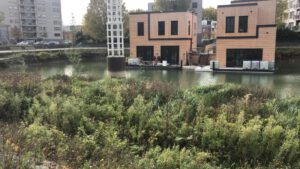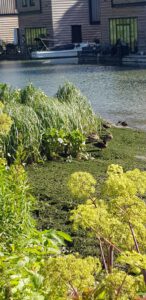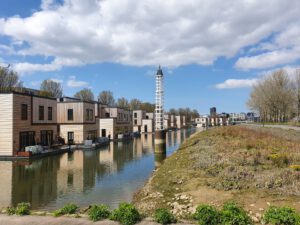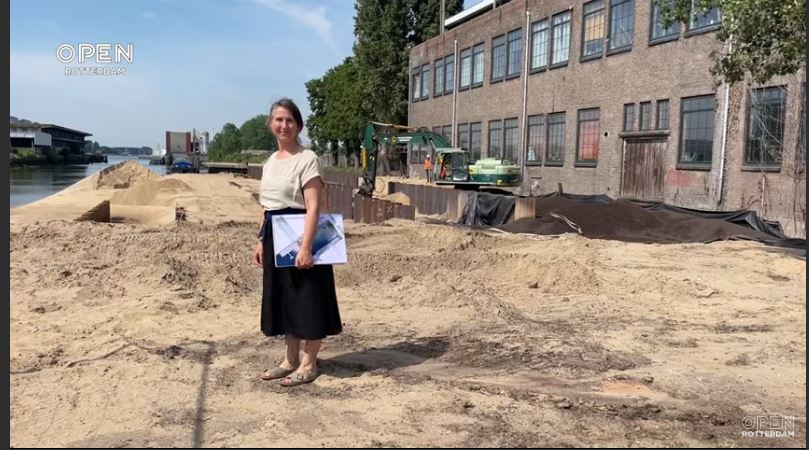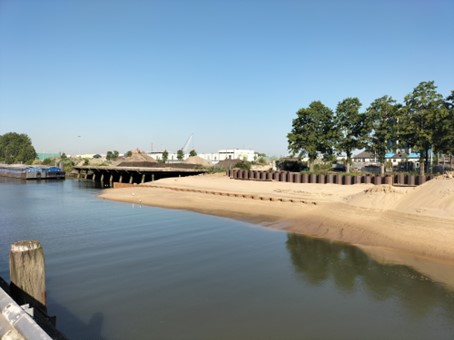The Nieuwe Maas crosses the urban area of Rotterdam and is part of the port area. Most banks of the Nieuwe Maas are paved and functionally furnished. As a result, the ecological value of the banks is limited.
The municipality of Rotterdam and its partners Rijkswaterstaat and the province of South Holland want to strengthen the ecological value of the port and improve the experience of the Nieuw Maas by local residents by creating tidal nature. In this context, a tidal bank has been constructed in the Nassau harbour.
The municipality of Rotterdam has asked Witteveen+Bos to monitor the ecological development of the tidal bank and tidal park for five years (2016-2021). This monitoring is part of the LIFE Urban Adapt Project, a collaboration between the municipality of Rotterdam, Rijkswaterstaat and the World Wildlife Fund to reduce the effects of climate change.
The aim of the monitoring was to determine how the ecology (fish, macrofauna and vegetation) in the Nassauhaven develops in relation to the construction of the tidal bank.
As a final conclusion, it can be stated that the installation of the tidal bank in the Nassauhaven has unfortunately not yet had the desired effect on the ecology in the port. One reason for this is the planting of vegetation in plastic containers, which prevented the vegetative expansion of the species. Another reason is that the tidal bank has been constructed too high, so that the bank dries up at low tide. As a result, young fish have no permanent shelter and the harbor is not attractive for fish as a spawning and growing area. The development of vegetation in the past four years has not had a positive effect on fish stocks. External factors also play a role. The presence or absence of fish species in the harbor seems to be based on chance, controlled by the seasons and the dynamic character of the Nieuwe Maas. Ultimately, the tidal bank in Nassauhaven is only a small part of the habitat of the fish that live in the river. The dynamic river system is by nature not an optimal habitat for plant-loving fish species. Due to the dynamics and the turbid water, submerged aquatic plants have difficulty establishing themselves. The absence of plant-loving species in the Nassauhaven is therefore not surprising.
It is positive, however, that the number of plant species encountered and the cover in the Nassauhaven stabilized in the fourth year after completion. Vegetation has also increased in height.

